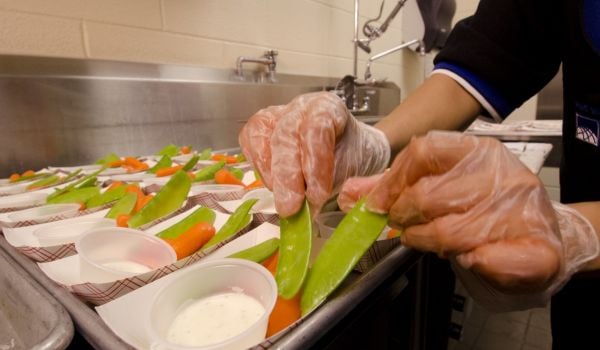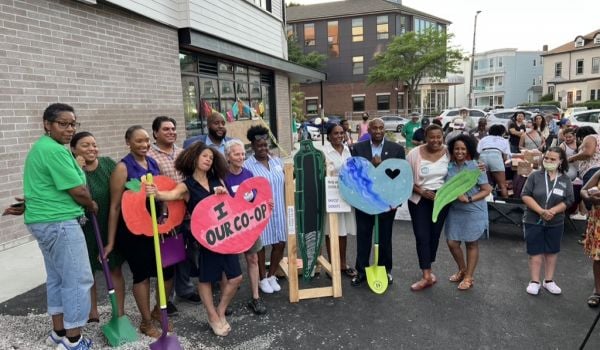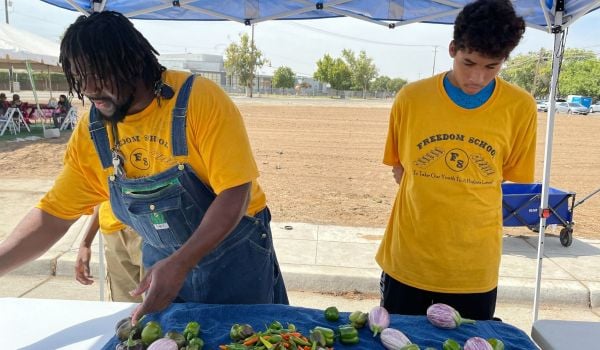When dinner time rolls around at the Tran household in Hanoi, Khoa and Ha Tran know how to keep their two children happy. Khoa’s famous thit kho tau — caramelized pork belly and eggs braised in coconut juice — is a surefire pleaser, but the main ingredient isn’t sitting in the Tran family’s freezer waiting to be defrosted. Instead, Ha stops by the neighborhood market on her way home from the office to pick up fresh pork meat and eggs.
The instinctual habit is ingrained in Vietnamese families. “I was born and raised in Hanoi and I’ve been doing this since I was a little girl,” says Ha. “From age 7, my mother would send me to the market — we had two to choose from, both two blocks away.”
The Vietnamese government estimates that nationwide there are at least 9,000 so-called “wet markets,” where in addition to farm fresh fruits and vegetables, fish are sold live and meat is butchered every morning. These markets are a feast for the senses, teeming with the scent of coriander, the sound of hawkers bargaining with vendors over a few dong, and the rich taste of a hot bowl of pho.
But if a business interest group and the city government had gotten their way, Ha’s daily trips to the market would have been a thing of the past by this year. In 2012, the Hanoi Trade Department pitched the Hanoi People’s Committee — the equivalent of the city government in Vietnam, a socialist republic — on a redevelopment proposal to turn 402 wet markets, many of them rusty shed-like structures with leaky roofs sitting on valuable urban real estate, into gleaming new shopping centers by 2020. In some cases, the wet markets could stay, but would be shunted into basement parking garages.
Ha, who runs advocacy campaigns for the Canadian international public health NGO HealthBridge, sprang into action — not only because it was a personal affront to an avid market-goer liker herself.
“A lot of people would be affected by the decision, especially the poor,” she says. “In Hanoi, the poor love to go to markets because the price is affordable and they can buy in small quantities, not like the big expensive packages at supermarkets. And they have personal relationships — regular vendors will let them pay next week if they are short one day.”

Ha Tran (courtesy Ha Tran)
For Ha, this kind of assault on a traditional public space in Hanoi felt like déjà vu all over again. In 2007, Ha led the campaign against a well-funded proposal to turn Thong Nhat Park, a leafy oasis popular for card games and tai chi sessions under the watchful eye of a statue of Vladimir Lenin, into a private amusement park with a 3D movie theatre, nightclub, shopping mall, and parking garage. She recruited architects and planners to appear on TV and give interviews to local media outlets about why public parks are essential breathing room in crowded Hanoi, a megacity home to 7.7 million people.
After the park issue blew up into 50 news stories and three TV reports, the Hanoi People’s Committee rejected the privatization plan.
But saving the city’s markets was a different animal. With hundreds of small markets scattered throughout the city, the challenge was much more diffuse than rallying public opinion around a single beloved park. Ha found a way to show Hanoi what transforming the city’s markets would mean by investigating the impact of two markets that had already gone under the knife. The Cua Nam market was demolished in 2007 with a shopping mall built in its place, ironically named “Cua Nam Market.” The Hang Da market was likewise redeveloped, though the wet market was allowed to return with stalls set up in the basement parking garage. But between high lease prices brokered by global real estate firm CBRE and a hidden location with no foot traffic, vendors at both former markets gave up. “The market is dead,” they told a fact-finding team from HealthBridge in 2011. As a result, many vendors migrated from formally leased market stalls into informal streetside stands.
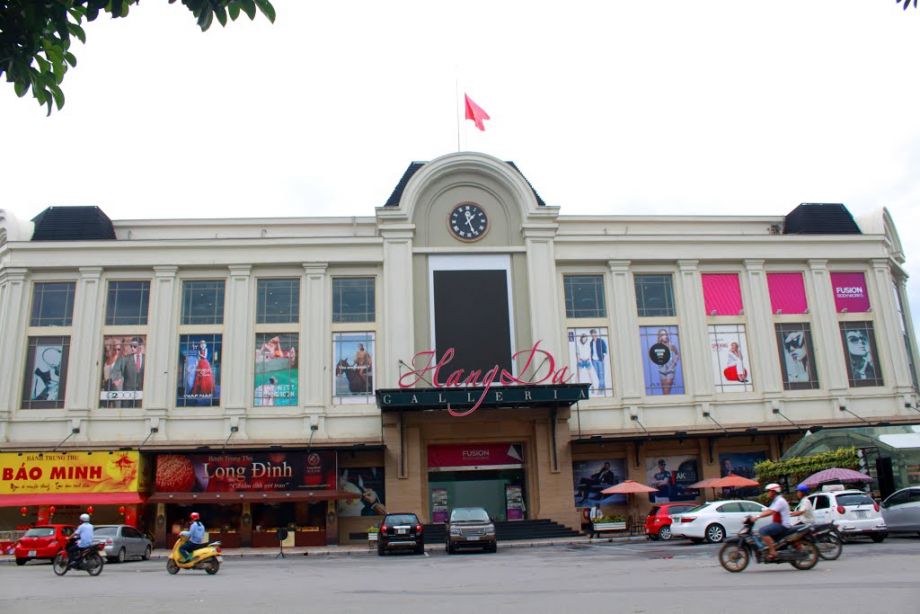
Hang Da Market was renovated into a shopping mall (the market vendors have been moved to the basement). (Photo by Stephen Davies)
While the redevelopment proposal was pitched in part as improving health outcomes by creating modern, supposedly more sanitary facilities, the ground-floor supermarket at Cua Nam Market sees few customers. Ha found that Hanoi residents kept up their market shopping, avoiding the higher prices of the supermarket.
“Their revenue went down and food hygiene is worse in the street markets,” Ha says. “Many local residents couldn’t find their local vendors anymore. They trusted the food sources from those vendors. They had to go further to find food. They used to walk to the market, now they had to drive motorbikes.”
What’s more, in middle-income countries like Vietnam, supermarkets don’t solve the problem of food deserts, they create them. “The supermarkets in Hanoi are not places where people can readily access healthy fruits and vegetables from the countryside,” says HealthBridge’s livable cities director, Kristie Daniel. “They are places where you can buy pre-packaged sugary, fatty, salty foods. In Asia, Africa, and South America, people are transitioning out of traditional diets and into Western diets — that’s bad for non-communicable disease.”
For Daniel, the answer is simple: “The built environment mechanism to encourage access to healthy food is a local public market.”
What’s more, argues architect Steve Davies, an evangelist for public markets who consulted on a future strategy for Hanoi, “Markets bring incredible value and benefits to cities in terms of job creation and the ability of people to start businesses at low cost.”
Back on the ground in Hanoi and armed with a two-pronged public health and economic development argument backed by evidence collected from the handful of markets that had already been redeveloped, Ha leapfrogged the local government and took advantage of Hanoi’s status as the national capital to make her case to the vice-minister of the Department of Trade and Industry. The ever-persuasive Ha succeeded. The national government asked Hanoi to review its ambitious market proposal and in 2013, the Hanoi People’s Committee backed off.
With the immediate threat off the table, Ha and her colleagues at HealthBridge began thinking about the future of the city’s markets. While beloved, the future of Hanoi’s markets was still in jeopardy from changing consumer habits among the younger generation who are less skeptical of supermarkets. Already, increasing street traffic means that Ha doesn’t let her own children go to the market on their own in the way that she did as a child.
“They were safe from redevelopment, but if there is no investment, they will die a different way,” Ha says. Indeed, Project for Public Spaces listed the Chau Long Market, a rare wet market still slinging freshly killed chickens in the city’s historic downtown district, as one of the world’s most endangered in 2015.
With support from PPS and HealthBridge, 20 Vietnamese architects tackled the challenge in the fall of 2018 with a charrette to diagnose issues facing existing markets, like leaky roofs, and design more attractive stalls that might better attract younger customers and turn the markets into more functioning public spaces — places that people want to hang out at, not just breeze in and breeze out with a fresh bundle of bok choy.
Davies ultimately hopes Hanoi will adopt a citywide market policy and governance structure to turn these ideas into reality. In 2017, London established the city’s first Markets Board. Barcelona has a quasi-public entity overseeing 43 public markets. In 2005, the Hong Kong Housing Authority divested wet markets to LINK, a real estate investment trust, which now owns and operates 73 such markets. While the private interest has upgraded and modernized the markets in its portfolio, the near-monopoly has also raised concerns about high prices.
But after Ha’s hardfought campaign, Davies hopes Vietnam’s civic leaders will finally realize they have a homegrown treasure that many developed world cities eager to create vibrant street life would envy. “Most cities don’t recognize they are sitting on this institution that has been around for centuries and has this incredible value,” he says.
Our special correspondent Gregory Scruggs will be in Abu Dhabi to cover World Urban Forum 10, taking place February 8 through 13, 2020. To stay on top of the essential conversations and innovative solutions presented at WUF 10, sign up for Urban Planet, our global sustainability newsletter.

Gregory Scruggs is a Seattle-based independent journalist who writes about solutions for cities. He has covered major international forums on urbanization, climate change, and sustainable development where he has interviewed dozens of mayors and high-ranking officials in order to tell powerful stories about humanity’s urban future. He has reported at street level from more than two dozen countries on solutions to hot-button issues facing cities, from housing to transportation to civic engagement to social equity. In 2017, he won a United Nations Correspondents Association award for his coverage of global urbanization and the UN’s Habitat III summit on the future of cities. He is a member of the American Institute of Certified Planners.



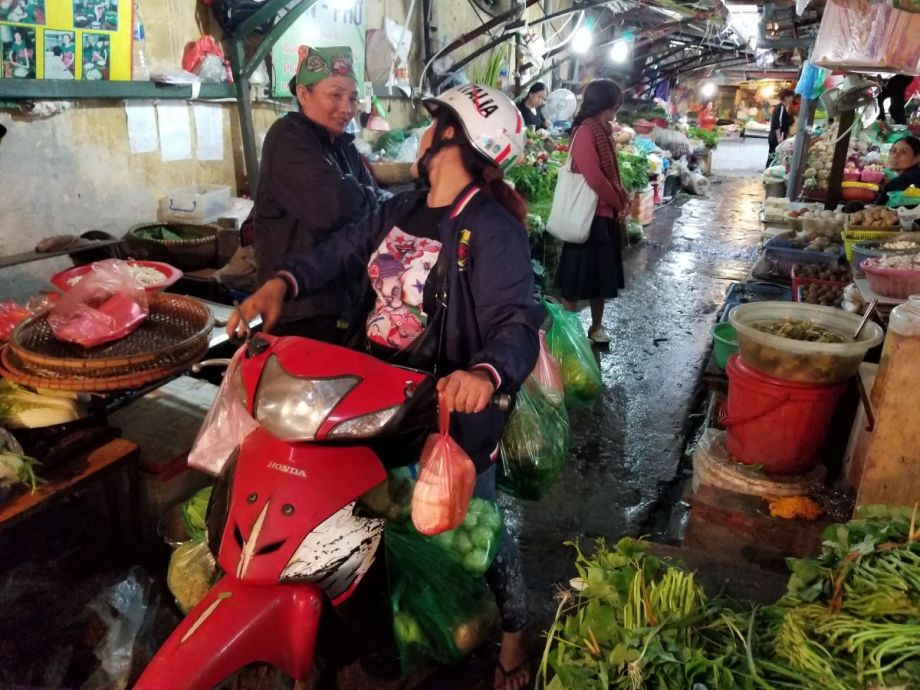


_600_350_80_s_c1.jpg)

